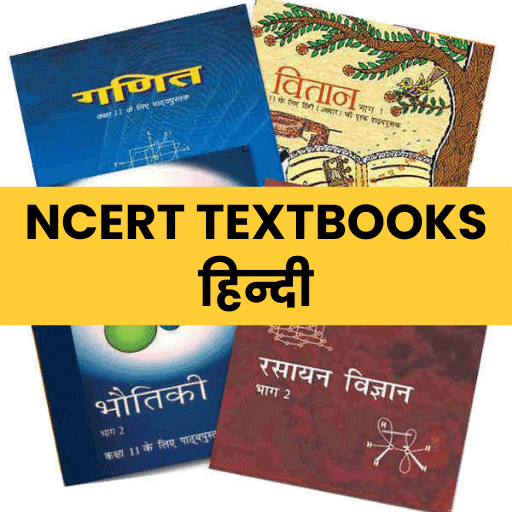Best Study Material for Class 7 Exam
Class 7 Exam > Class 7 Notes > Social Studies (SST) Class 7 > NCERT Summary: Delhi 12th To 15th Century
The Delhi Sultans Summary Class 7 History Chapter 3
Introduction
- Delhi first became the capital of a kingdom under the Tomara Rajputs, who were defeated by Chauhan (also called Chahamanas) of Ajmer.
- The transformation of Delhi into a capital that controlled a vast area of the subcontinent started with the foundation of the Delhi Sultanate at the beginning of the 13th century.
- Under the Tomaras and Chauhans Delhi became an important commercial centre.
 Delhi Sultanate
Delhi Sultanate
- In the beginning of the thirteenth century, the transformation of Delhi into a capital started with the foundation of the Delhi Sultanate.
- The Delhi Sultans built many cities in the area that we now know as Delhi.
The Rulers of Delhi
Rajput Dynasties
- Tomaras: Significant ruler - Ananga Pala
- Chauhans: Notable ruler - Prithviraj Chauhan
Early Turkish Rulers
- Qutbuddin Aybak (1206–1210)
- Shamsuddin Iltutmish (1210–1236)
- Raziyya (1236–1240)
- Ghiyasuddin Balban (1266–1287)
Khalji Dynasty
- Jalaluddin Khalji (1290–1296)
- Alauddin Khalji (1296–1316)
Tughluq Dynasty
- Ghiyasuddin Tughluq (1320–1324)
- Muhammad Tughluq (1324–1351)
- Firuz Shah Tughluq (1351–1388)
Sayyid Dynasty
- Khizr Khan (1414–1421)
Lodi Dynasty
- Bahlul Lodi (1451–1489)
Timeline of Important Periods
- Early 12th century – 1165: Tomaras
- 1130–1145: Reign of significant Rajput rulers
- 1165–1192: Rise of Prithviraj Chauhan
- 1175–1192: Expansion of Rajput influence
- 1206–1290: Early Turkish rulers (Mamluk dynasty)
- 1290–1320: Khalji dynasty
- 1320–1414: Tughluq dynasty
- 1414–1451: Sayyid dynasty
- 1451–1526: Lodi dynasty
Finding Out about the Delhi Sultans
- Inscriptions, coins and architecture are the sources of information on the Sultans of Delhi.

- Tawarikh was written in Persian, the language of administration under the Delhi Sultans.
- In 1236 Sultan Iltutmish’s daughter, Raziyya became Sultan.
She was removed from the throne in 1240.
The Expansion of the Delhi Sultanate
- Delhi’s authority was also challenged by Mongol invasions from Afghanistan.
- The Sultanate consolidation occurred during the reign of Ghiyasuddin Balban and further expansion under Alauddin Khalji and Muhammad Tughluq.
- The first set of campaigns along the “internal frontier” of the Sultanate aimed at consolidating the hinterlands of the garrison towns.
- The second expansion occurred along the “external frontier” of the Sultanate.
 |
Download the notes
NCERT Summary: Delhi 12th To 15th Century
|
Download as PDF |
Download as PDF
Consolidation under the Khaljis and Tughluqs
- The Khalji and Tughluq monarchs appointed military commanders as governors of territories of varying sizes which were called iqta and their holder was called iqtadar or muqti.
 Consolidation Under Khaljis and Tughluqs
Consolidation Under Khaljis and Tughluqs
- Large parts of the subcontinent remained outside the control of the Delhi Sultans.
It was difficult to control distant provinces like Bengal from Delhi. - Local chieftains established their rule in these regions.
- Sometimes rulers like Alauddin Khalji and Muhammad Tughluq could force their control in these areas but only for a short duration.
- The Mongols under Genghis Khan invaded Transoxiana in north-east Iran in 1219.
- Mongol attacks on the Delhi Sultanate increased during the reign of Alauddin Khalji and in the early years of Muhammad Tughluq’s rule.
The Sultanate in the Fifteenth and Sixteenth Centuries
- After the Tughluqs, the Sayyid and Lodi dynasties ruled from Delhi and Agra until 1526.
- By then, Jaunpur, Bengal, Malwa, Gujarat, Rajasthan and the entire south India had independent rulers who established flourishing states and prosperous capitals.
- This was also the period which saw the emergence of new ruling groups like the Afghans and the Rajputs.
- Sher Shah Sur (1540-1545) started his career as the manager of a small territory for his uncle in Bihar and eventually challenged and defeated the Mughal emperor Humayun (1530-1540, 1555-1556).
The document The Delhi Sultans Summary Class 7 History Chapter 3 is a part of the Class 7 Course Social Studies (SST) Class 7.
All you need of Class 7 at this link: Class 7
|
63 videos|366 docs|46 tests
|
FAQs on The Delhi Sultans Summary Class 7 History Chapter 3
| 1. Who were the prominent rulers of the Delhi Sultanate during its establishment? |  |
| 2. What were the major factors that contributed to the expansion of the Delhi Sultanate? |  |
Ans. The expansion of the Delhi Sultanate was facilitated by military conquests, political alliances, and the weakening of regional powers such as the Rajputs and the Cholas. The effective use of cavalry and archery in warfare, along with strategic marriages and diplomacy, also contributed significantly to the Sultanate's territorial growth.
| 3. How did the Khalji and Tughluq dynasties consolidate power in the Delhi Sultanate? |  |
Ans. The Khalji dynasty, under rulers like Alauddin Khalji, implemented economic reforms, including price control measures and the establishment of a centralized administration, which strengthened the Sultanate. The Tughluq dynasty, particularly under Muhammad bin Tughluq, further expanded the empire and introduced administrative innovations like the introduction of token currency, although some policies faced backlash.
| 4. What was the socio-cultural impact of the Delhi Sultanate in the 15th and 16th centuries? |  |
Ans. The Delhi Sultanate during the 15th and 16th centuries had a significant socio-cultural impact, including the promotion of Persian and Urdu languages, advancements in architecture, and the blending of Hindu and Islamic cultures. This period also saw the rise of various Sufi orders, which contributed to the spiritual and cultural milieu of the time.
| 5. What were the key challenges faced by the Delhi Sultanate during its rule? |  |
Ans. The Delhi Sultanate faced several challenges, including internal rebellions, succession disputes, and the threat of invasions from regional powers and the Mongols. Additionally, the lack of a strong administrative framework and the difficulty in managing a vast empire led to political instability and eventual decline, particularly in the late 16th century.
Related Searches































